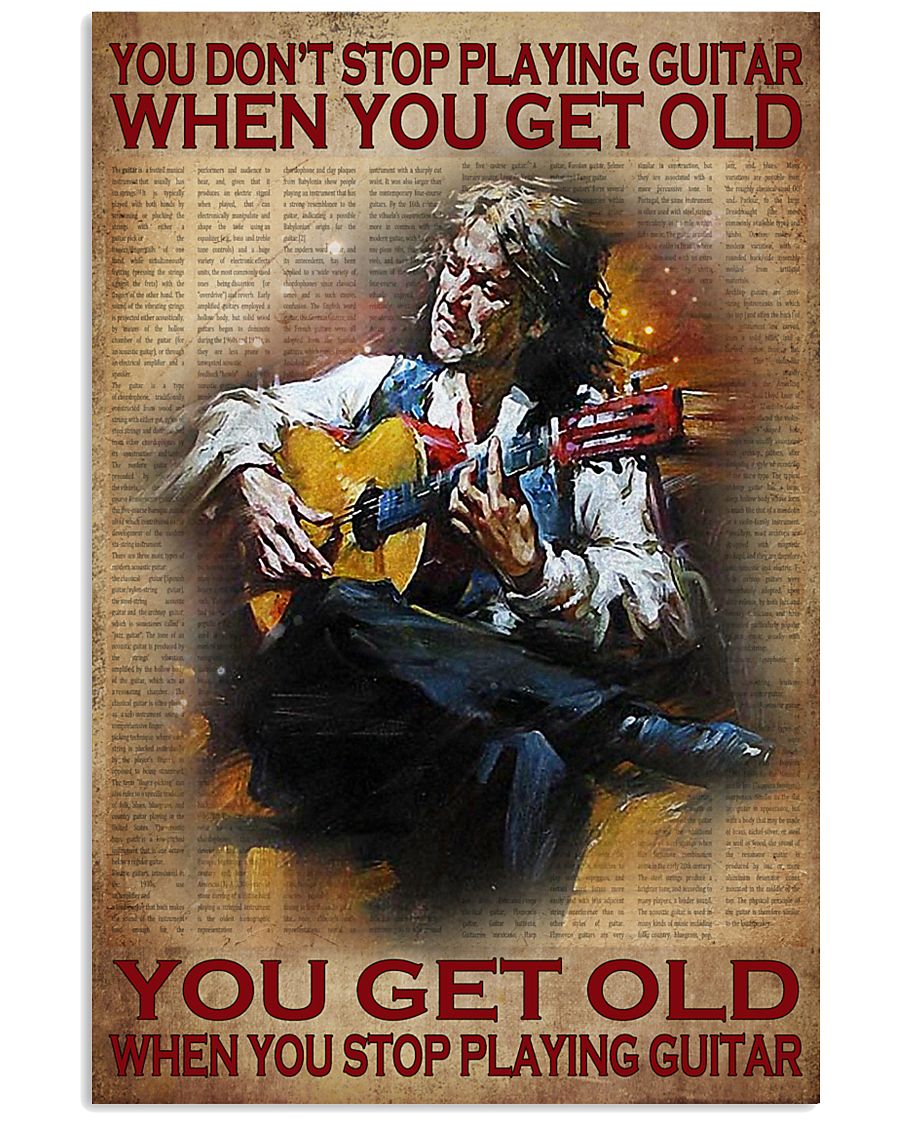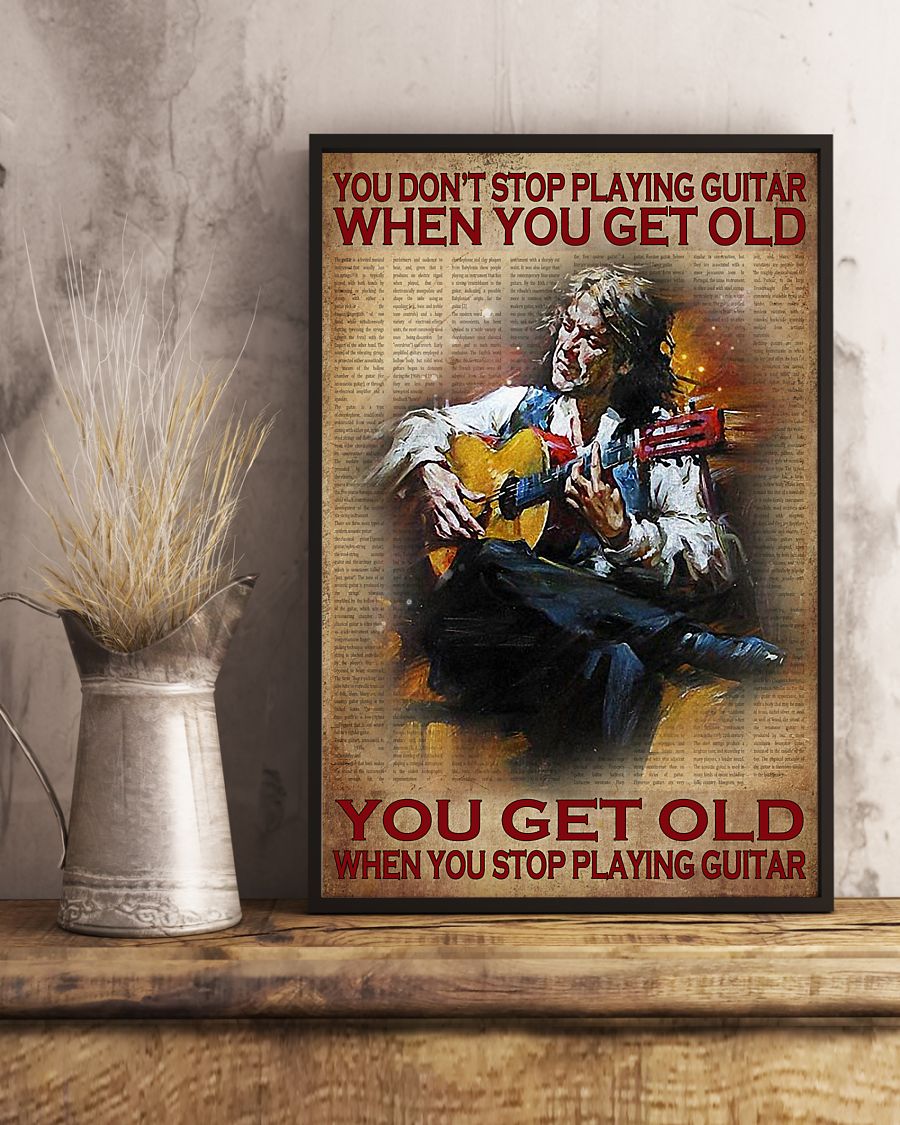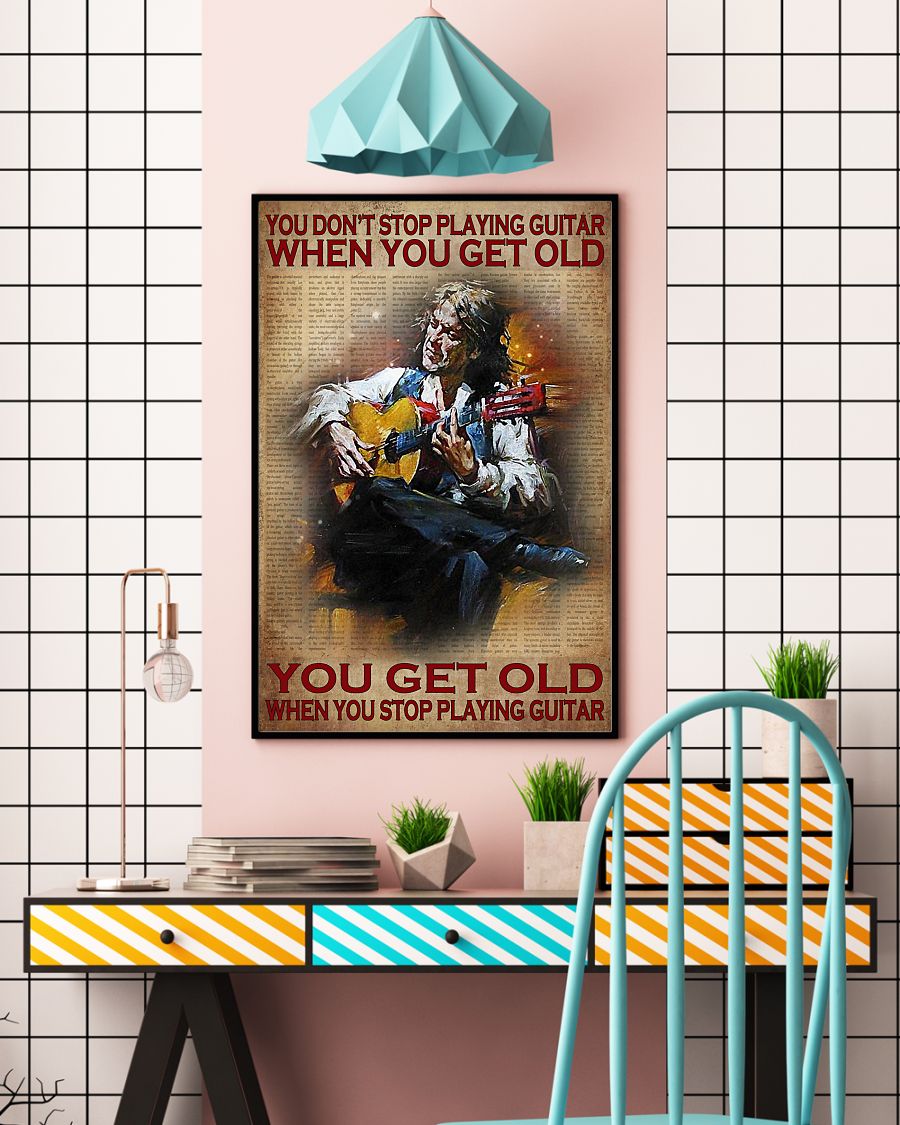Nowadays, You don’t stop playing guitar when you get old you get old when you stop playing guitar poster help customers to have a good appearance. Not only work environment but also hangout purpose. Indeed, T-shirts are attributes of good materials, which made from the foremost comfy and highest quality materials. It gives positive emotion including soft and comfortable and also amazing colors bright. Which allow you to tricky or dazzling attain the desired achievement.
You don’t stop playing guitar when you get old you get old when you stop playing guitar poster
The 1657 Lexicon You don’t stop playing guitar when you get old you get old when you stop playing guitar poster Chymicum, by William Johnson glosses the word as “antimonium sive stibium.” By extension, the word came to refer to any fluid obtained by distillation, including “alcohol of wine,” the distilled essence of wine. Libavius in Alchymia refers to “vini alcohol vel vinum alcalisatum”. Johnson glosses alcohol vini as “quando omnis superfluitas vini a vino separatur, ita ut accensum ardeat donec totum consumatur, nihilque fæcum aut phlegmatis in fundo remaneat.” The word’s meaning became restricted to “spirit of wine” in the 18th century and was extended to the class of substances so-called as “alcohols” in modern chemistry after 1850.

Do you love You don’t stop playing guitar when you get old you get old when you stop playing guitar poster ?
Children generally have fewer rights than You don’t stop playing guitar when you get old you get old when you stop playing guitar poster adults and are classed as unable to make serious decisions, and legally must always be under the care of a responsible adult or child custody, whether their parents divorce or not. Recognition of childhood as a state different from adulthood began to emerge in the 16th and 17th centuries. Society began to relate to the child not as a miniature adult but as a person of a lower level of maturity needing adult protection, love and nurturing. This change can be traced in paintings: In the Middle Ages, children were portrayed in art as miniature adults with no childlike characteristics. In the 16th century, images of children began to acquire a distinct childlike appearance. From the late 17th century onwards, children were shown playing with toys and later literature for children also began to develop at this time.


Thanks for your support
Thank you for considering our T-shirt design to know more about my professionalism, background and also production experience. We look forward to getting an opportunity of advising with you further. And how we can significantly contribute to the ongoing of your reputable appearance. Concurrently, this professional design will be delivered to end-customer within 3-5 days.






 Fast Global Delivery( tracking code will be sent via your email ).
Fast Global Delivery( tracking code will be sent via your email ).



